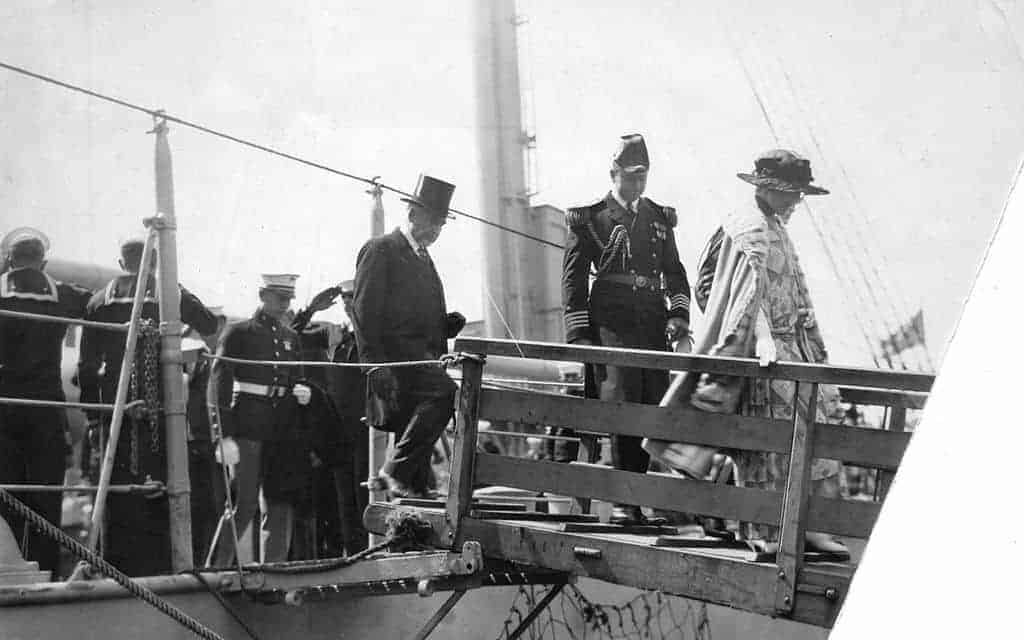The United States and Canada have been allies and trading partners for more than two centuries. Together they are the world’s largest trading partners after the US and China, sharing the world’s longest border between two nations. Over the history of the two nations they have shared defense arrangements with each other. Trade and cultural exchanges between the North American countries has grown throughout their history. In area Canada is slightly larger than its southern neighbor, which dwarfs it in terms of population. Both nations are rich in natural resources, and both nations for the most part view the other favorably. In short, the United States and Canada are friends.

But it hasn’t been all sweetness and light between the United States and Canada. In their shared history there have been invasions, border disputes, and problems over fishing rights. Canada strongly opposed American involvement in the Vietnam War and provided asylum to draft dodgers from the United States despite official protests by the American government. Both countries used tariffs and trade barriers against the other. Disputes between Canada and the United States were sent to international arbitration on several occasions, both before Canada became a self-governing dominion and since.
Here are ten lesser known facts about the long-standing relationship between the United States and Canada.
Fear of the Americanization of Canada

In the American Revolution and during the War of 1812, America invaded Canada, then a British colony, though containing a population which was more of French descent than British. In both wars, American leadership believed that the French Canadians and their former allies among the Indians would flock to support the removal of the British. Americans during the Revolutionary War thought Canada would hasten to join the confederation of independent states that they were in the process of creating, and with the support of the population of Canada the British could be removed from all of North America. They were wrong.
The invasion of Canada during the Revolution was a two pronged affair which saw a detachment under Benedict Arnold attack up the Kennebec River through the swamps of Maine to reach Quebec. Bad food, poorly constructed boats, and the difficulties encountered from the harshness of the terrain ensured Arnold’s detachment was depleted in strength when it arrived before Quebec. Arnold began the expedition with 1,100 men, including the hardy woodsmen of Daniel Morgan’s Virginia rifle companies. By the time he arrived at Quebec, privations and desertions had reduced his strength to only 600 men, many of them sick, and all of them near starving.
Montgomery had an easier time marching via Montreal, had some success recruiting Canadians to join the revolutionary cause, and when he arrived at Quebec he and Arnold planned a joint attack. On New Year’s Eve, 1775, the Americans and the Canadian supporters they had recruited assaulted the city. Montgomery was killed, Arnold was wounded, Morgan was taken prisoner, and the attack failed. Arnold attempted to put the city under siege and recruit additional troops from among the Canadians. He lacked the resources for an effective siege, and support for his troops from the Canadians was minimal. By spring the Americans withdrew.
As the American Revolution wore on many Loyalists fled their homes in the 13 states to Halifax in Nova Scotia via British ships. Most of these Loyalists, as many as 75,000, remained hostile to the United States after the war, and a strong anti-American sentiment arose in Canada. It was also present among the French-Canadians, who were largely Catholic, wary of the anti-Papist views of many Americans. To them, American republican values and beliefs conflicted with their views of loyalty to King and Parliament, and ensured resistance to the American invasions during the War of 1812, the earliest of which were disastrous for the invaders.
Canadian growth following the American Revolution and the War of 1812 was considerably smaller than in the United States, and was less likely to arouse conflicts with the Indian tribes north of the US – Canadian border. Economic growth was slower as well. Canada began to develop anti-British sentiment that evolved in the late eighteenth century but never to the level of rebellion. Even today, its head of state is whomever sits on the throne of the United Kingdom, and the Canadians are for the most part content to have it so remain (other than the French-Canadian separatists in Quebec). The War of 1812 was the last attempt to seize land from Canada by military force by the United States, but it later tried again through other means.

